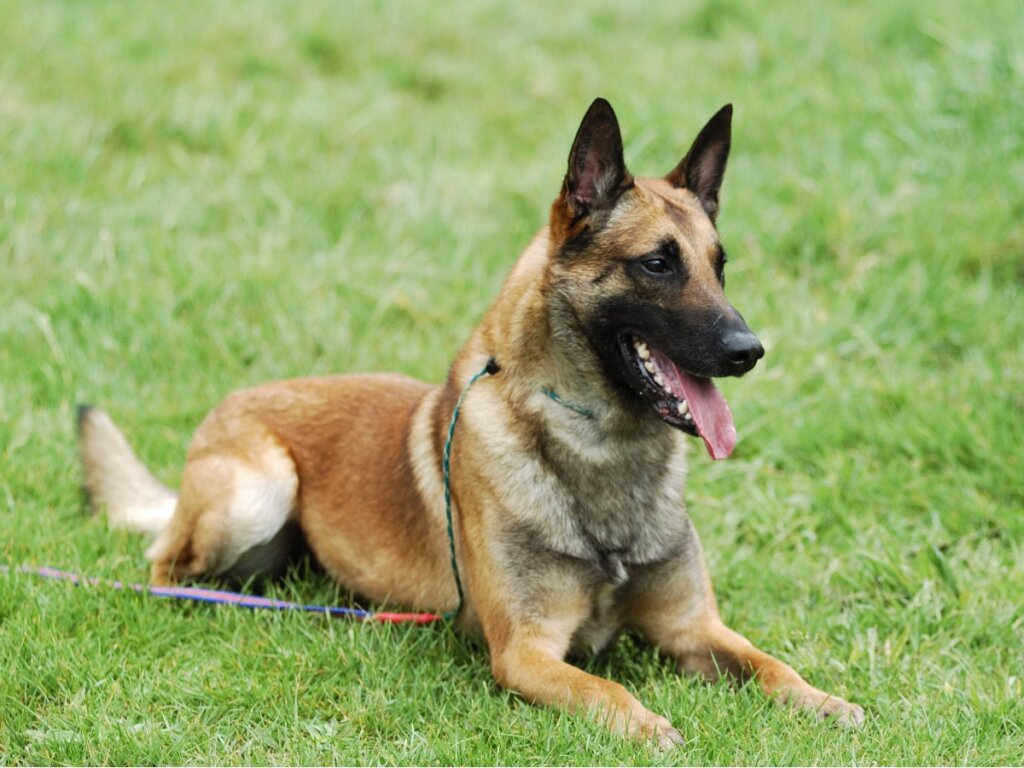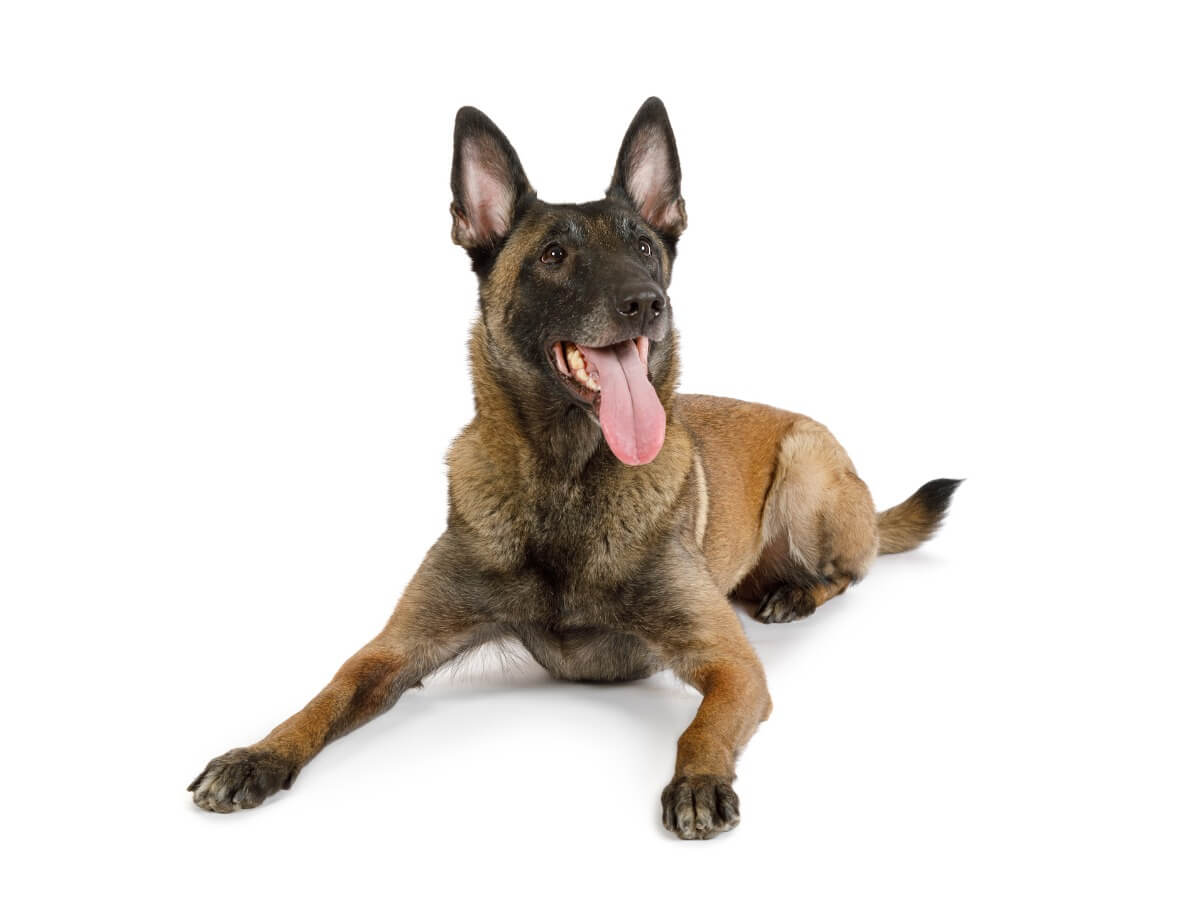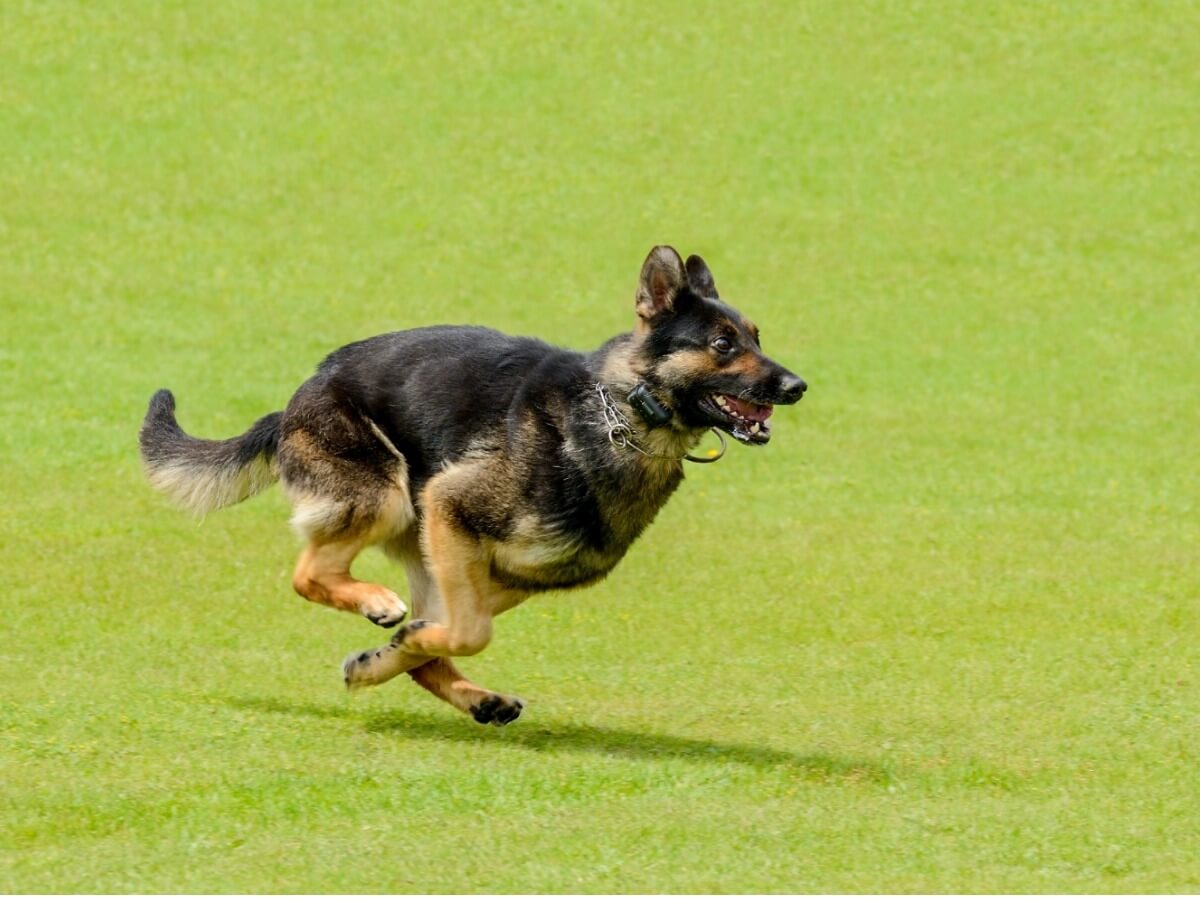Belgian Malinois: Care and Feeding

The Belgian Malinois is a medium-sized dog whose name comes from the Belgian city of Mechelen, where it originated. This dog is recognized for its outstanding intelligence and energy. Therefore, it can be an ideal pet for lovers of hiking, surveillance, and sports.
Its learning ability makes it an easy dog to educate and train. In addition, it should be noted that the Belgian Malinois is part of the group of shepherd dogs, along with the Groenendael, the Tervueren, and the Laekenois. Next up, you’ll get to know all the characteristics and the care advice that you should take into account if you have a Belgian Malinois.
Physical characteristics
The Belgian Malinois male can weigh 25 to 34 kg (55 to 75 pounds) and has a height of 61 to 66 centimeters (just over 2 feet), while the female weighs 18 to 27 kilograms (40 to 60 pounds) and is 56 to 61 centimeters (just under 2 feet). Added to this, this breed has a strong, robust, and elegant body. Also, the Belgian Malinois has an elongated head and its black ears are always naturally erect.
On the other hand, this sheepdog’s color can range from bright beige to mahogany, with some hairs dotted with black. Despite having short, straight hair, it’s also tough enough to withstand the weather, as it has a fairly dense undercoat.
The behavior of the Belgian Malinois
The Belgian Malinois is one of the most intelligent breeds of dog. This canine doesn’t only excel at herding, but, if trained well, is capable of detecting drugs, bombs, or gas leaks. It can even participate in search, rescue, and tracing efforts. In the same way, it’s a very faithful and protective dog that can be of great help to people with disabilities.
These canines display high energy levels and some are extremely happy, especially when young. With good training, you can transform their temperamental side into obedience, affection, loyalty, and protection. In addition, this breed enjoys open spaces and sharing with members of its family.
Physical activity of the Belgian Malinois
Daily walks aren’t enough for the Belgian Malinois. Being a breed with so much energy, it needs to have a routine that keeps it active, healthy, and happy, both physically and mentally. In other words, apart from walks, exercise and games are essential for this dog.
The Malinois is an ideal companion for running, cycling, and other sports. So, in addition to the daily walks, we recommend that its owner provides it with a large space for it to carry out physical activities that allow it to release all its energy.
Belgian Malinois hygiene
This sheepdog needs to be brushed occasionally to maintain its good looks. Although it has a short coat that’s easy to care for, it should be noted that it sheds twice a year. Therefore, during these periods, brushing should be more constant, in order to help remove all loose hair.
Likewise, in order to maintain the hygiene of the Belgian Malinois, it’s advisable to cut their nails every time they grow too long. Long nails can be uncomfortable when the dog tries to walk or run. Besides, bathing them once a month, or every two months, depending on how dirty they are, will also favor the dog’s grooming.

Belgian Malinois diet
Good nutrition is essential for the optimal development of the Belgian Malinois. Regardless of whether it’s with dog feed or homemade food, this dog’s diet should depend on its size, weight, age, and also on the number of activities it performs. Likewise, it’s important that such feeding should be supervised and approved by a veterinarian.
In turn, as it’s a dog that requires a lot of physical activity, hydration is vital. You can also give them treats as a reward when training them. However, don’t forget that it isn’t good for them to get used to this, as it could cause obesity.
Nutrition plan for the puppy
In the case of a Belgian Malinois puppy, it’s important to understand that, up to 2 or 3 months of life, the ideal food for the little one is its mother’s milk. After that, you can begin to provide the puppy with food that will help it to grow.
If you choose to feed it with dog food, it must be of excellent quality and have the appropriate proportions of proteins, carbohydrates, vitamins, minerals, and fats. The first portions of solid food should be offered to the dog in the form of porridge.
From 2 to 3 months of age, the Malinois puppy should have a diet of 150 to 200 grams per day (about 5 to 7 oz), distributed in 4 servings. At 4-5 months, the consumption should be 250 to 300 grams per day (8.8 – 10.5 oz), divided into 3 portions, while from 6 to 8 months you should eat between 300 and 400 grams per day (10.5 to 14 oz), provided in 2 or 3 servings. From 8 to 12 months, the puppy should eat 400 to 500 grams (14 to 17.6 oz) in 2 or 3 servings.
Nutrition plan for adults
After 12 months of life, the Belgian Malinois will already be considered an adult dog. Therefore, if their diet is based on feed, you’ll have to change the one you gave it as a puppy for an adult line that continues to be of high quality.
Similarly, it should be noted that the adult Malinois diet should be rich in protein and carbohydrates, above all, because it’s a very active dog. In this sense, these two nutrients will be vital to benefit the dog’s metabolism and improve its physical condition.
A moderate proportion of fat will strengthen the cardiovascular system of the Malinois. On the other hand, the fibers, vitamins and minerals will complement its whole diet. This will help this smart dog stay healthy. However, you must pay attention to the amount of food you provide the dog with, so as not to create obesity problems.
Nutrition plan for elderly dogs
After reaching 7 years of age, this sheepdog will be considered an elderly dog, and its feed will have to be changed again to supply its new needs. It should have a lower caloric index than that of adult dogs and it should also be easy to digest.
It should be noted that feeding elderly Belgian Malinois requires greater care, especially to prevent them from becoming overweight. Also, pay attention to the vitamins included in its menu, because they’ll help to keep its immune system in optimal condition.
Tips for healthy eating
If you have a Belgian Malinois at home, remember that it requires a very balanced and nutritious diet because it’s an active breed. Likewise, keep in mind that it’ll always be better if your dog’s diet is monitored by a veterinarian, who’ll know how to determine what’s best for your pet.
Feed your dog in a quiet, safe environment. In addition to this, remember that this breed is very intelligent, so you can train it to make it respect all the established times for its meals.
Finally, don’t forget that the diet of the Belgian Shepherd Malinois should depend on its age, size, weight and the physical activity it performs. Proper nutrition will be essential if you hope to have a healthy, active, cheerful, protective, faithful, and loving sheepdog at home.

This breed is one of the most beautiful, active, and disciplined you could find. However, it has many of the specific requirements of large dogs, such as needing to have plenty of exercise and a considerable caloric intake. This dog is a huge responsibility, but it’ll become one of your best and most loyal friends.
All cited sources were thoroughly reviewed by our team to ensure their quality, reliability, currency, and validity. The bibliography of this article was considered reliable and of academic or scientific accuracy.
- Pastor belga malinois. Wikipedia. Recogido el 23 de julio de 2021 de: https://es.wikipedia.org/wiki/Pastor_belga_malinois
- Pastor belga malinois. American Kennel Club. Recogido el 23 de julio de 2021 de: https://www.akc.org/dog-breeds/belgian-malinois/
